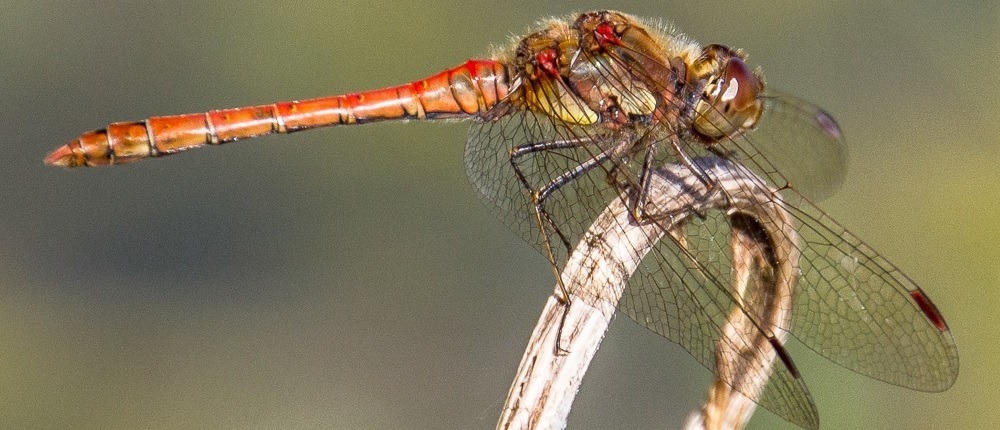Who let the bugs out?
Insects are by far the most common animals on the planet. An incredible 1.5 million species have been named but there are many more species which have yet to be discovered and identified. Without bugs, life as we know simply wouldn’t be possible. Bugs pollinate fruits, flowers and vegetables, ensuring that we have the food we need to survive. Their byproducts are useful to. Without insects there would be no honey, beeswax or silk.
Many insects help to keep pest species at controllable levels, ensuring that a balanced ecosystem is maintained. Others eat decaying organic matter and dead animals, preventing waste from accumulating in the environment. The role of insects in the food chain shouldn’t be underestimated either. They are an important source of food for amphibians, reptiles, birds and mammals.
Bees are particularly crucial to the environment. If there were no bees to pollinate plants, all vegetation would eventually die out. Food would be scare and oxygen levels would fall beneath the levels we need to survive. Unfortunately bees have been in sharp decline in the UK. with the population of bumblebees having fallen by a dramatic 70% in just thirty years. The loss of wildflower meadows and hedgerows has severely impacted bees as has the use of pesticides and chemical fertilisers in agriculture.
Bees do respond very quickly when food sources are established. The reinstatement of meadows and hedgerows helps our bees to recover. At The Woollen Mill, we have been careful to plant flowers which attract bees and our efforts have paid off. There are always plenty of bees around in the summer months and you can hear them buzzing around the bushes or see them landing on their favourite blooms.
There are plenty of other interesting insects to look out for in the garden and the surrounding countryside. Dragonflies flit around the river banks bringing gorgeous iridescent colour to the landscape. Ladybirds prevent aphids from eating our plants and a profusion of moths and butterflies visit in the summer months.
Naturally, there are some insects which are not so welcome. Life by the river means that clouds of gnats arrive to feed at the river when the light begins to fade. It is tempting to wish them away, but they are vital to the food chain. Without the gnats our beautiful bats wouldn’t be here!
THE INTRIGUING INSECTS OF GWYNEDD
HERE’S WHAT YOU CAN EXPECT TO SEE!
Bees
It would be impossible to overstate the importance of bees to the environment. Happily, our garden and the surrounding lanes are visited by an incredible number of bees during the summer. The presence of bees indicates a healthy ecosystem and so we view these fascinating creatures as welcome guests. They love the flowers that we have planted and it is amazing to watch them competing with the butterflies for their favourite blooms. People tend to shy away from bees because of their stings but they are not aggressive animals.
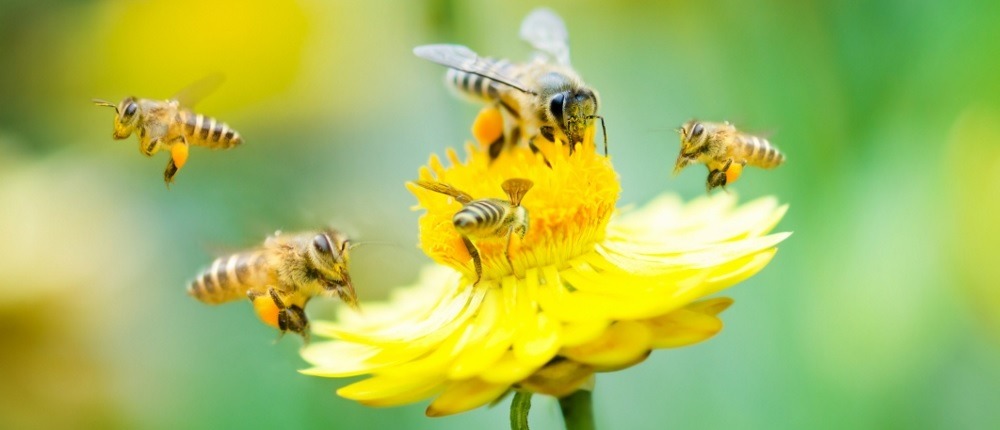
Banded Demoiselle
A large damselfly which is found by streams and rivers, the banded demoiselle is a stunning sight. Females vary in colour from metallic green to bronze but the males, as pictured here, are metallic blue or blueish green and have translucent wings. Each wing features a dark blue-black spot. This damselfy is on the wing from May until August. It is a common species throughout the UK, Europe and Asia but we always feel excited when the wonderful flashes of exotic colour can be seen flitting around the river bank.
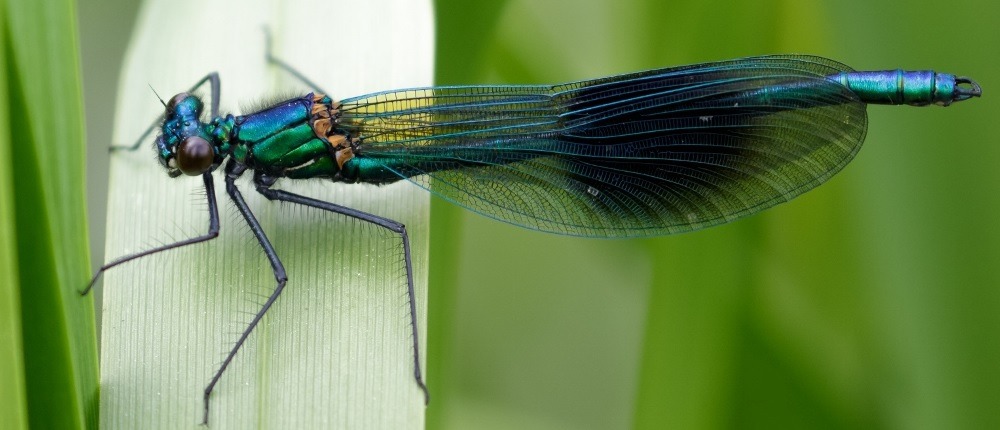
Beautiful Demoiselle
Smaller than the banded demoiselle, this pretty European damselfy favours areas close to fast-running water. Males have metallic blue-green bodies, blue-green eyes and metallic blue wings with clear areas at the tips. Females have dark brown iridescent wings with white patches near the tips. Their bodies are metallic green but have a bronze tip at the abdomen. Due to its broad wings, the beautiful demoiselle can be blown away by the wind more easily than other species of dragonflies.
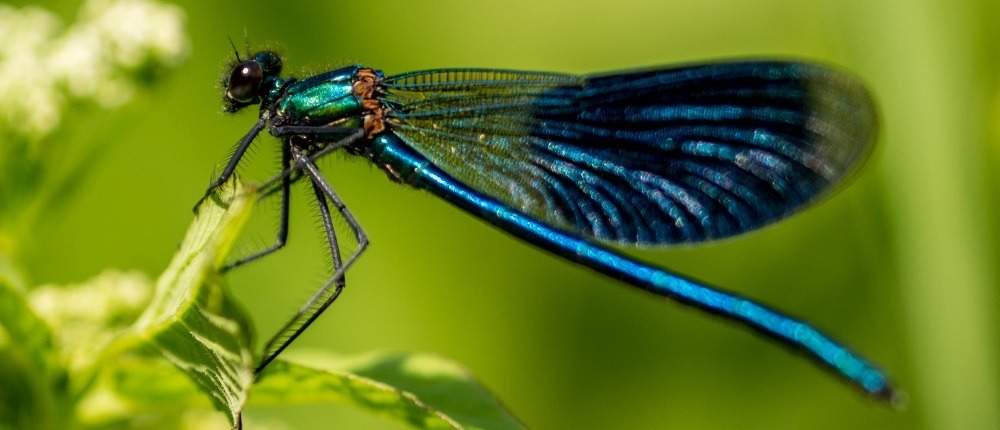
Scorpion Fly
The Scorpion Fly is a strange looking creature and boasts a curved ‘tail’ which looks like a sting. But this is actually the male’s clasper which they use when mating. You will find scorpion flies in gardens, woodland and hedgerows. They gravitate to stinging nettles and brambles where they feed on dead insects, often stealing the contents of spiders’ webs. Yuk! Black and yellow with reddish heads, the flies are common in the UK and there are three different species which are difficult to tell apart.
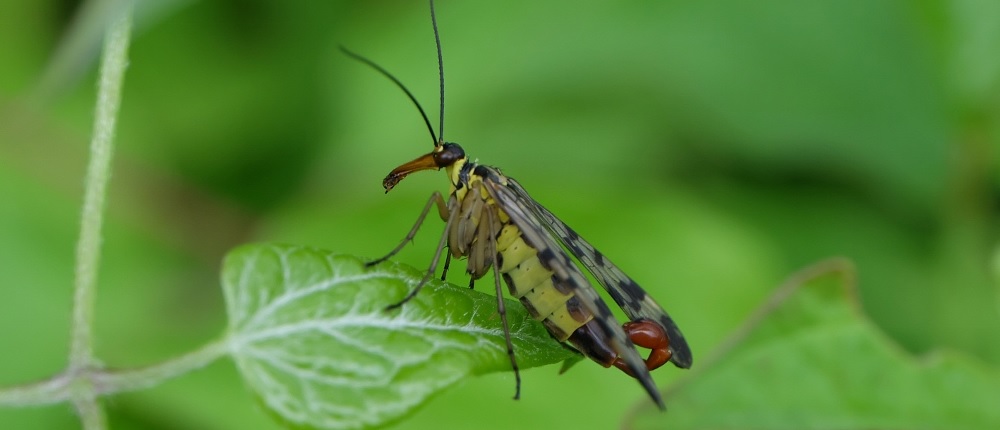
Common Mayfly
On the wing between April and September, the common mayfly can be seen around freshwater wetlands, rivers and lakes. The larvae live under water and hatch in summer, sometimes in their hundreds simultaneously. Once hatched, the mayfly can live for as little as one day and may not even feed as its sole purpose is to mate after which it dies. There are 51 species of mayfly, only one of which emerges in sync with the blooming of the mayflower (hawthorn) for which these insects are named.
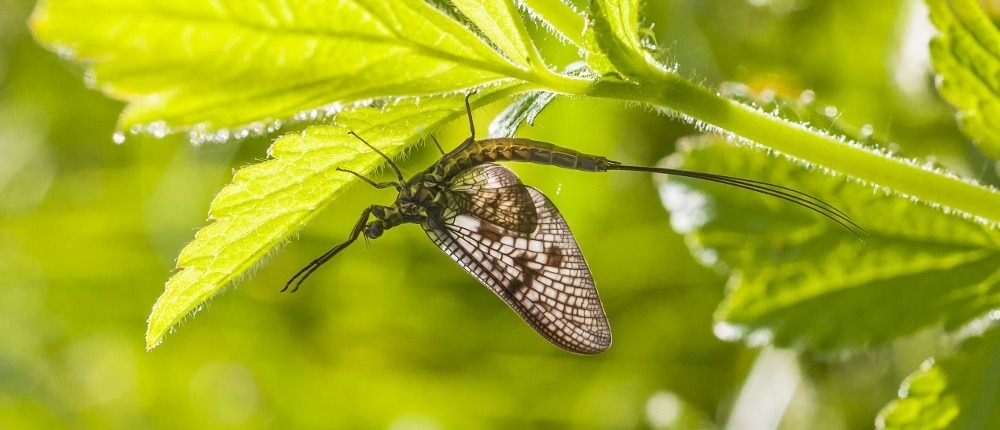
Common Darter
Generally on the wing from July to October but sometimes seen later in the year, the Common Darter is a small dragonfly which breeds around any bodies of water including ponds, rivers and lakes. The males are bright red and the females golden brown. These small but beautiful dragonflies dart out to catch their insect prey and then retire to a favourite perch to eat it. Late in the season, you might be lucky enough to spot them on twigs and fences, angling their wings towards the sun to warm up.
